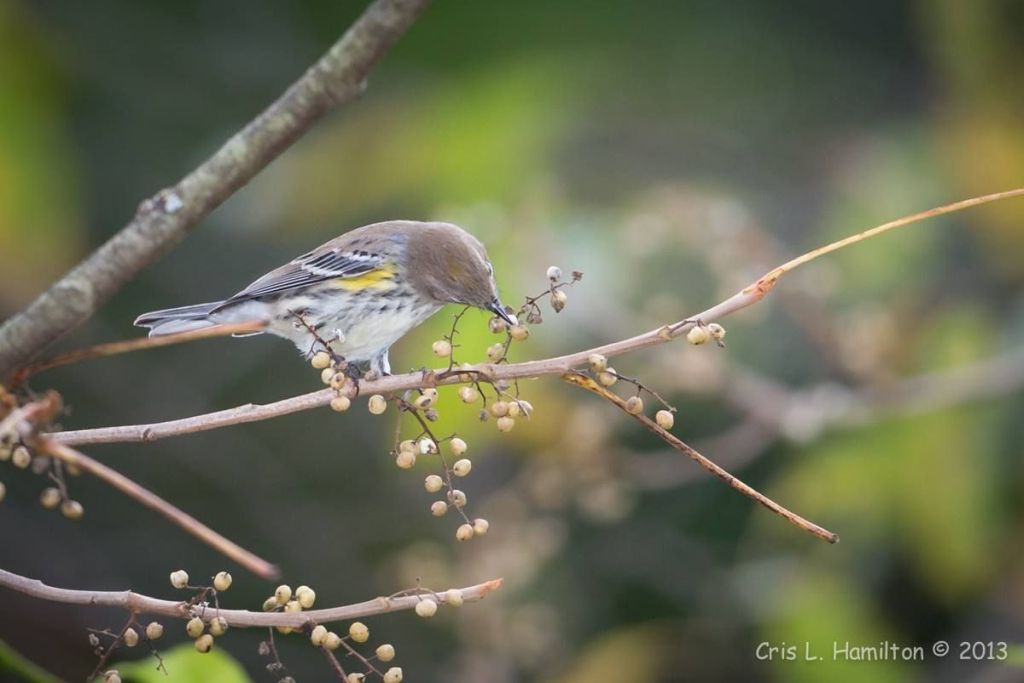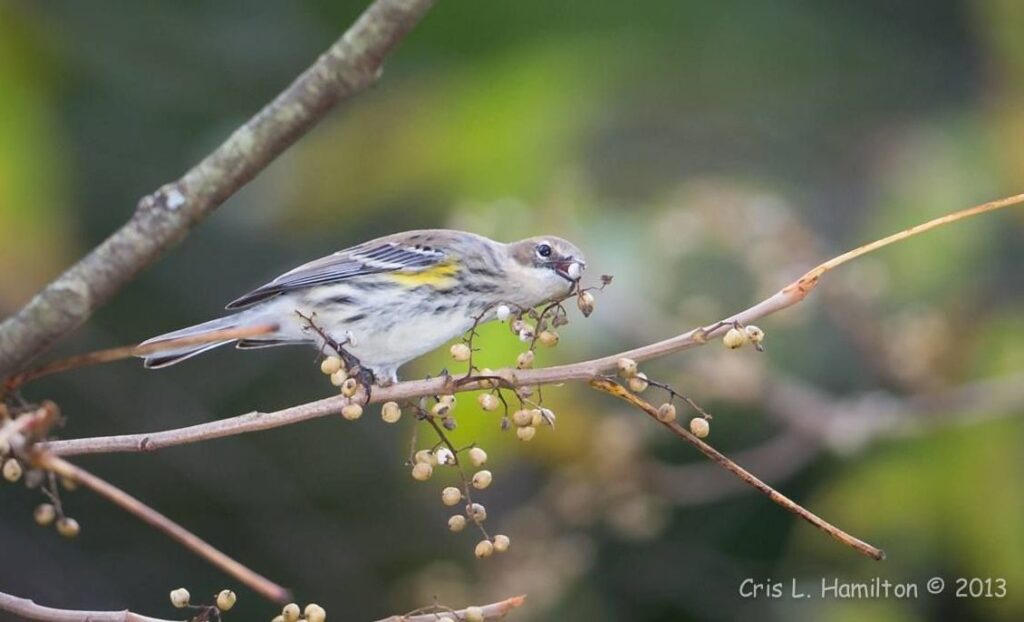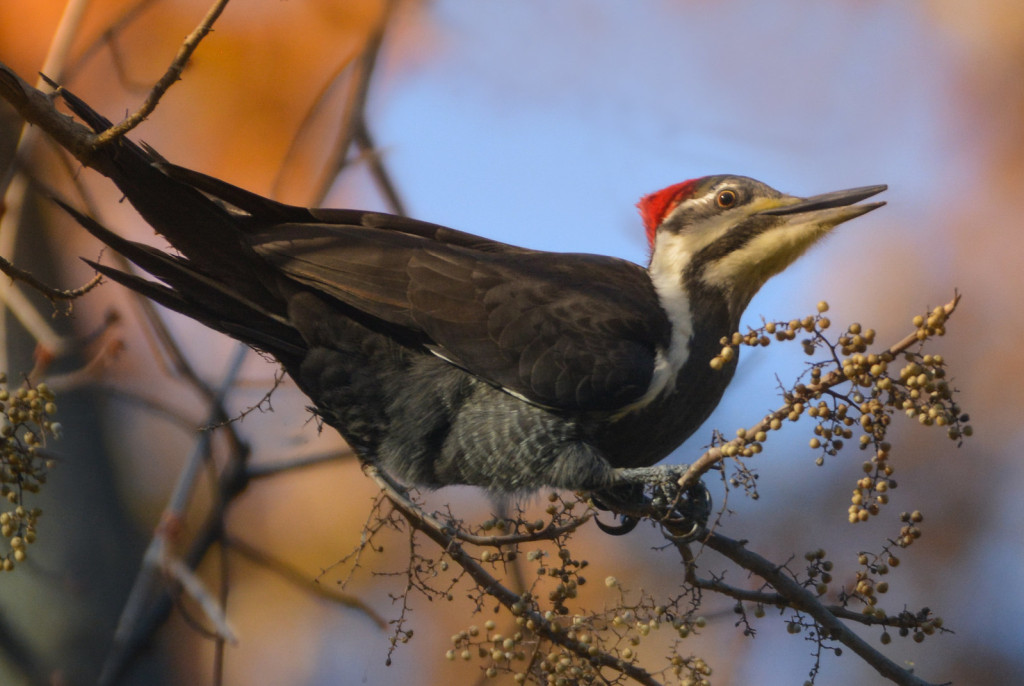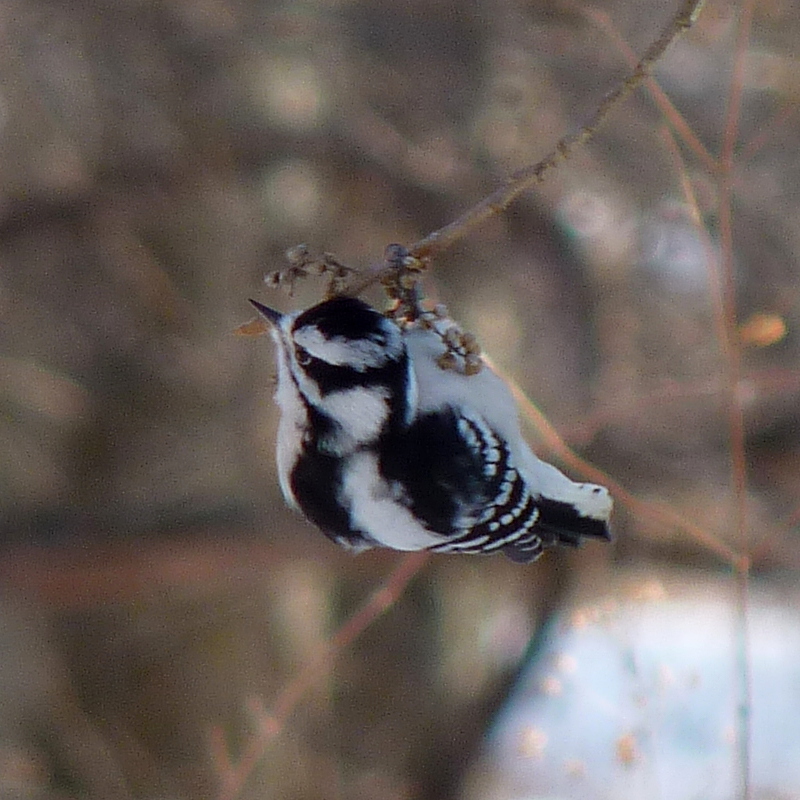
22 October 2020
When you see a bird eating white berries from a hairy vine you might not realize it’s eating poison ivy. Birds are blissfully immune to the urushiol in poison ivy sap that gives us humans a nasty rash.
By late October poison ivy (Toxicodendron radicans) doesn’t look like the plant we’ve been avoiding all summer. The leaves are red or missing, the vine is exposed, and bunches of white berries hang from the branches. It’s easy for migrating yellow-rumped warblers (Setophaga coronata) to find the food they’re so fond of.

Resident birds such as downy and pileated woodpeckers munch on the berries all winter.

It makes me feel itchy to think of it!
p.s. Deer eat poison ivy, too.
(photos by Cris Hamilton and from Flickr via Creative Commons licensing by Dendrioca cerulea and Jen Goellnitz; click on the captions to see the originals in Flickr)

Worst part of the Poison Ivy Feast is the spreading of the seeds all over the yard when the birds poop out the seed itself. Sprouting up all spring and summer in yard, flower beds and hedge rows. If you are not careful, you will “get a dose” of the itchy stuff. It is a pain to have to keep pulling up the sprouts and to keep a watch on there your summer bare feet and hands go.
I didn’t know what poison ivy looks like in the winter with the white berries. Thank you!